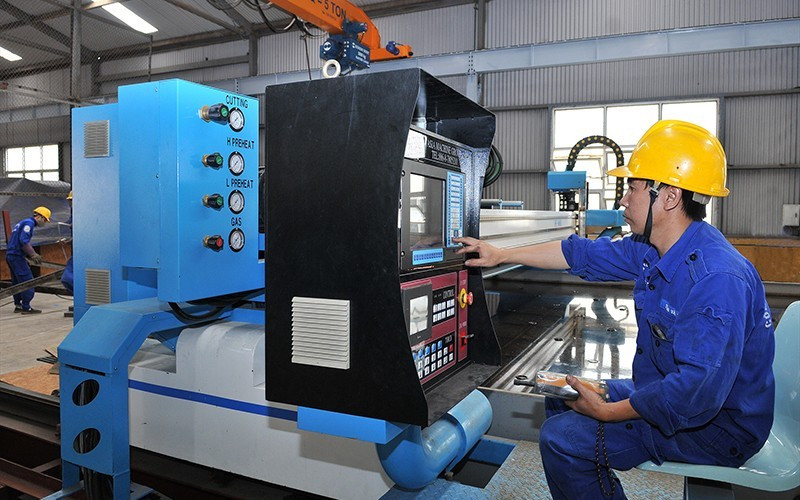Restoring the growth momentum of Vietnam’s manufacturing sector
Manufacturing has always been a key engine of Vietnam’s economic growth, but the sector struggled in the early months of the year due to the global economic downturn and high inflation.
It is forecast that industrial enterprises will continue to face difficulties in the remaining months of 2023 and that growth momentum is unlikely to be regained soon.
This time of the year is usually when garment and footwear makers are busy manufacturing winter products, but now manufacturers in many localities are running below capacity.
Chairman of the Hanoi Leather and Footwear Association Pham Hong Viet said that businesses in the sector are facing a very difficult period as orders have plunged by 50-70%, with some having no orders at all to keep their factories running. In the meantime, there are no signs of improvement externally, making producers highly uncertain about their operations in the final quarters of the year.
The garment sector is also in a similar situation with patchy and small orders lasting from the fourth quarter of 2022, with no signs of recovery, according to Vinatex General Director Cao Huu Hieu. He cited an example that an enterprise with thousands of workers has to accept orders of just 500-1,000 jackets.
In the first half of the year, inflation cooled down but remained high in the US and the European Union, prompting consumers in these markets to tighten their spending, resulting in lower demand for imported goods.
Phi Thi Huong Nga, head of industrial statistics at the General Statistics Office, said that since Vietnam is a highly open economy, manufacturing activity of domestic enterprises, especially those in garments, footwear and electronics, is heavily reliant on external demand. Although manufacturers have made great efforts to push the sale of their products and look for new markets, manufacturing activity remains low.
According to the Ministry of Industry and Trade, the domestic market has maintained decent growth, mainly due to rising prices, but the growth rate has been decreasing over the months, indicating that domestic consumption is shrinking as a result of falling incomes. Domestic purchasing power remains weak and is failing to stimulate production, while high inflation and interest rates are also affecting the sale of both luxury goods and ordinary items.
In order to regain the growth momentum for industrial production, the urgent task is supporting enterprises to withstand this difficult period and wait for the opportunity to expand production. Chairman of the Vietnam Association of Small and Medium Enterprises Nguyen Van Than suggested establishing a special working group to promote the implementation of business support policies.
He added that the Government or the National Assembly Standing Committee can issue a resolution to grant the working group the authority to address urgent issues, accelerate administrative reform and enhance governance, especially at local level.
In response to the Prime Minister’s request, the State Bank of Vietnam has cut its policy interest rates, helping lower deposit and lending rates. The average deposit rate is now around 5.8%, down 0.7 percentage point from the end of 2022, while lending rates have also dropped by about one percentage point to 8.9%.
The Prime Minister also asked commercial banks to continue cutting costs to lower lending rates further as a measure to support enterprises. For their part, ministries, agencies and localities are required to hold regular dialogues with enterprises to learn about the challenges facing them and introduce solutions to address such difficulties.
According to Deputy Minister of Industry and Trade Phan Thi Thang, the ministry will continue supporting enterprises to take advantage of free trade agreements, and step up the negotiation of new trade pacts with markets where Vietnamese goods were previously not widely present.






